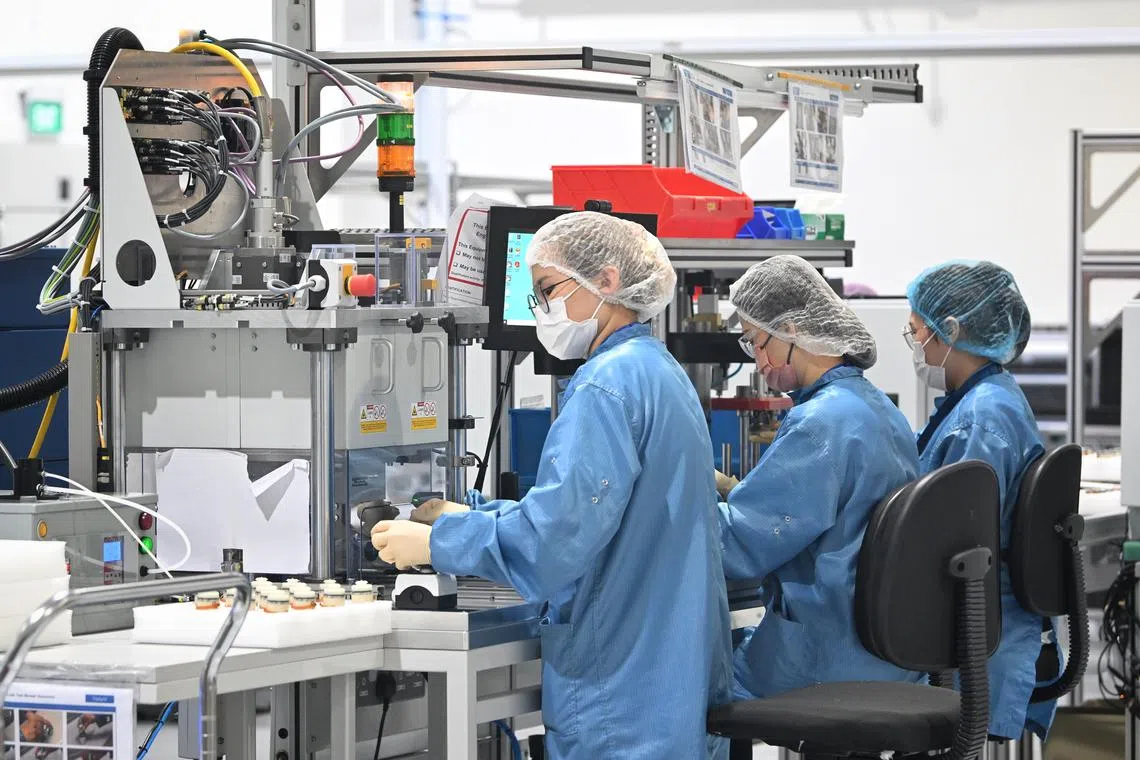S’pore’s manufacturing sector remains a bright spot in the region
Sign up now: Get ST's newsletters delivered to your inbox

The PMI rose to 51 points, up from 50.9 points in August.
PHOTO: ST FILE
Follow topic:
SINGAPORE – The manufacturing sector bucked the downtrend across most of the region in September to rack up another month of gains.
The purchasing managers’ index (PMI), a barometer of the sector, rose to 51 points, up from 50.9 points in August.
Electronics was the key driver, with its PMI reading coming in at 51.5 points, up from 51.3 in August and its highest level in more than six years, noted data from the Singapore Institute of Purchasing and Materials Management on Oct 2.
OCBC Bank chief economist Selena Ling said the higher readings were unsurprising, given the positive signals from industrial production data in August.
“The faster expansion of some of the underlying sub-indexes is generally indicative of a pickup in external demand conditions that is consistent with a global soft landing narrative,” she noted.
The picture across the region was gloomier, with anaemic global demand – particularly decelerating growth in the US – hampering factory output in much of Asia.
Japan, China, South Korea, Malaysia, Indonesia and Vietnam felt the drop in industrial output most acutely.
Meanwhile, slower-paced growth is forecast for Taiwan, Thailand and the Philippines, even though their PMIs remain in expansion.
DBS Bank economist Chua Han Teng said the PMI reading here signals good prospects for Singapore’s factories for the rest of 2024, with electronics expected to be the key driver of overall manufacturing growth.
“This is likely to be underpinned by the fulfilling of rising new export orders spurred on by the replacement of smartphones and PCs, as well as the broadening adoption of artificial intelligence applications,” he added.
Ms Ling was less sanguine, saying: “The question is, if we will see the Singapore manufacturing PMI data for October also start to ease. I suspect this is likely to be the case as we get closer to the year end.”
Ms Ling felt that there were a couple of dark clouds on the horizon: “For instance, input prices have risen further even as supplier deliveries have fallen, which could mean that global supply chain challenges are starting to bite.
“This could be linked to recent developments associated with worsening Middle East tensions that could potentially be complicated by the US port strikes.
“Softening order backlogs and future business gauges for electronics suggest that the ramp-up for the year-end Christmas order season may be on the verge of petering out.”
Ms Ling added that markets are counting down to November’s US elections and the possibility of tariffs being imposed on China and other economies, which is heightening near-term uncertainty.

Meanwhile, China’s recently announced stimulus measures,
UOB associate economist Jester Koh was more upbeat, noting that the eventual replenishment of inventory could add further tailwinds to the recovery.
“We expect the strong sequential momentum in electronics manufacturing to be sustained through the rest of 2024 and into the first quarter of 2025,” he said.
“Further rate cuts by central banks in the advanced economies could provide some counter-cyclical cushion to any slowdown in consumption and investment activity.”


